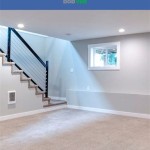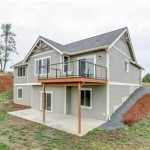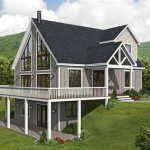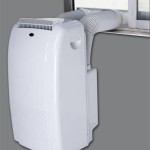Which Is Better For Basement Flooring: A Comprehensive Comparison
Selecting the appropriate flooring for a basement presents unique challenges compared to other areas of a home. Basements are often susceptible to moisture, temperature fluctuations, and potential flooding. Therefore, choosing a flooring material that can withstand these conditions while also providing comfort, aesthetic appeal, and durability is paramount. Various options exist, each with its own set of advantages and disadvantages.
This article will provide a detailed comparison of several popular basement flooring choices, examining their key features, performance characteristics, and suitability for different basement environments. The objective is to furnish homeowners with the information necessary to make informed decisions based on their specific needs and priorities.
Understanding Basement Flooring Requirements
Before evaluating specific flooring materials, it's crucial to understand the common challenges associated with basement environments. Moisture is a primary concern. Basements are often located below ground level, making them vulnerable to groundwater seepage, condensation, and leaks. Excessive moisture can lead to mold growth, which poses health risks and can damage the flooring and subfloor. Therefore, moisture resistance or waterproof qualities are highly desirable.
Temperature fluctuations are another factor. Basements may experience significant temperature swings, particularly in climates with harsh winters or hot summers. Flooring materials should be able to withstand these changes without warping, cracking, or expanding excessively. Thermal insulation properties can also be beneficial, contributing to energy efficiency and comfort.
Durability is essential. Basements are often used for storage, recreation, or workshops, subjecting the flooring to heavy foot traffic, impacts, and potential spills. The chosen material should be able to withstand these demands without showing signs of wear and tear quickly. Cost, both initial purchase price and installation expenses, is always a consideration. Furthermore, ease of installation and maintenance can influence the overall long-term cost-effectiveness of a flooring option.
Evaluating Popular Basement Flooring Options
Several flooring materials are commonly used in basements. Each option possesses unique properties that make it more or less suitable for specific applications. This section will examine the key characteristics of several popular choices, including their strengths and weaknesses in relation to basement environments.
Concrete: Concrete is a naturally durable and moisture-resistant material often used as a subfloor in basements. It can be left exposed, stained, painted, or sealed to create a finished floor. Exposed concrete is relatively inexpensive and easy to maintain. However, concrete can be cold and hard underfoot, and it lacks sound absorption. Staining or painting concrete can improve its appearance, but these treatments may require periodic reapplication. Sealing concrete helps to prevent moisture penetration, but it does not eliminate the risk of condensation. Concrete is most suitable for basements where cost is a primary concern and a utilitarian aesthetic is acceptable. Adding rugs and mats can enhance comfort and warmth.
Epoxy Coating: Epoxy coatings are two-part resin systems applied directly to a concrete subfloor. They create a seamless, durable, and chemical-resistant surface. Epoxy coatings are available in a wide range of colors and finishes, allowing for customization. They are also relatively easy to clean and maintain. However, epoxy coatings can be susceptible to scratching and chipping, and they may require professional installation for optimal results. Furthermore, epoxy coatings do not provide significant thermal insulation or sound absorption. They are a good option for basements used as workshops or garages where durability and chemical resistance are important. Proper surface preparation is essential for ensuring adhesion and longevity.
Vinyl Flooring (Luxury Vinyl Plank/Tile): Vinyl flooring, particularly luxury vinyl plank (LVP) and luxury vinyl tile (LVT), has become a popular choice for basements due to its water resistance, durability, and aesthetic versatility. LVP and LVT are typically constructed with multiple layers, including a wear layer, a decorative layer, and a core layer. The core layer is often made of waterproof materials, making it suitable for moisture-prone environments. Vinyl flooring is available in a wide range of styles and patterns, mimicking the look of wood, stone, or tile. It is also relatively easy to install and maintain. However, not all vinyl flooring is created equal. Low-quality vinyl may be less durable and prone to scratching or denting. LVP and LVT are suitable for a wide range of basement applications, including living areas, playrooms, and home offices. Selecting a high-quality product with a thick wear layer is recommended for increased durability.
Tile Flooring (Ceramic/Porcelain): Ceramic and porcelain tile are highly durable, water-resistant, and easy to clean, making them excellent choices for basements. Tile is available in a wide range of sizes, shapes, colors, and patterns, allowing for diverse design options. Porcelain tile is denser and less porous than ceramic tile, making it even more resistant to moisture and staining. However, tile can be cold and hard underfoot, and it requires a stable subfloor for proper installation. Grout lines can be susceptible to staining and mold growth if not properly sealed and maintained. Tile is suitable for basements where durability and water resistance are paramount, such as bathrooms, laundry rooms, or entryways. Installing radiant floor heating can mitigate the coldness of tile.
Engineered Wood Flooring: Engineered wood flooring consists of a thin layer of hardwood veneer bonded to a plywood or fiberboard core. It offers the aesthetic appeal of solid hardwood while providing greater dimensional stability and moisture resistance. Engineered wood flooring is less susceptible to warping or expanding due to changes in humidity compared to solid hardwood. However, it is not fully waterproof and can be damaged by prolonged exposure to moisture. Engineered wood flooring is relatively easy to install and maintain, but it is generally more expensive than vinyl or laminate flooring. It can add warmth and elegance to a basement living area or home office, but it is not suitable for basements prone to flooding or high humidity levels. Selecting a product with a water-resistant core can improve its performance in basement environments.
Carpet: Carpet provides warmth, comfort, and sound absorption, but it is generally not recommended for basements due to its susceptibility to moisture and mold growth. Carpet can trap moisture, creating a breeding ground for mold and mildew. Even with regular cleaning, it can be difficult to remove all moisture and contaminants from carpet fibers. However, if carpet is desired, selecting a low-pile, synthetic fiber carpet with a moisture-resistant backing is crucial. Proper ventilation and dehumidification are also essential. Carpet is best suited for basements with minimal moisture concerns and where comfort is a primary consideration. Regular cleaning and maintenance are necessary to prevent mold growth and maintain its appearance.
Rubber Flooring: Rubber flooring is a durable, resilient, and water-resistant option often used in gyms, playrooms, and workshops. It provides excellent shock absorption and sound insulation. Rubber flooring is available in rolls, tiles, or mats, making it relatively easy to install. However, rubber flooring can have a distinct odor, particularly when new, and it may not be aesthetically appealing for all applications. It is also relatively expensive compared to other flooring options. Rubber flooring is suitable for basements where durability, safety, and sound absorption are important. It is a good choice for home gyms, playrooms, or workshops where heavy equipment or activities are involved.
Key Considerations for Each Flooring Type
Each flooring option presents unique advantages and disadvantages based on the specific basement environment. The following points highlight the key considerations for each type, helping to narrow down the most appropriate choice.
Concrete While very durable and cost-effective, exposed concrete is not ideal for living spaces due to its coldness and lack of cushioning. Concrete floors should be sealed regularly to mitigate moisture absorption, but they remain vulnerable to water vapor transmission from the ground. If used, rugs and mats are essential for comfort.
Epoxy Coating Epoxy is best suited to utility areas where resistance to chemicals, oil, and heavy impacts is necessary. It is easy to clean and can withstand heavy foot traffic. However, epoxy is not the warmest surface and can be slippery when wet. Prepping concrete for epoxy application is essential for proper adhesion and long-term performance.
Vinyl Flooring (LVP/LVT) LVP/LVT offers excellent water resistance and aesthetic versatility, making it a strong contender for many basement applications. It is available in various styles and price points. Choose thicker planks with a high wear layer for increased durability and resistance to dents and scratches. Pay attention to the installation method, as some types may require an underlayment for added moisture protection and comfort.
Tile Flooring (Ceramic/Porcelain) Tile is ideal for areas prone to moisture, such as bathrooms or laundry rooms. It is incredibly durable and easy to clean. However, ceramic and porcelain tile can be cold and hard underfoot, making it less desirable for living spaces unless combined with radiant heating. Proper grouting and sealing are crucial to prevent water damage.
Engineered Wood Flooring Engineered wood offers the warmth and beauty of hardwood but is less tolerant of moisture than other options. It is best suited for basements that are well-ventilated and have minimal humidity. Avoid installing engineered wood in areas prone to flooding or significant water exposure. A moisture barrier underlayment is recommended.
Carpet Carpet provides superior comfort and warmth but should be used cautiously in basements. Opt for synthetic fibers and a moisture-resistant backing to minimize the risk of mold growth. Regularly clean and dehumidify the space to prevent moisture buildup. Avoid carpet in areas prone to spills or leaks.
Rubber Flooring Rubber flooring is durable, resilient, and sound-absorbent, making it a good choice for gyms, playrooms, and utility areas. It is water-resistant and easy to clean. However, rubber flooring can have a noticeable odor, especially when new, and may not be aesthetically appealing for all basement designs.

5 Best Flooring Options For Basements Floors2day

What Is The Best Flooring For Basements Get Pros And Cons

What Are The Best Flooring For Basement In Homes

Selecting The Best Basement Flooring Next Day Floors

The Best Flooring Options For Your Basement America

Best Basement Flooring Options Forbes Home

The Best Flooring Options For Your Basement From Forest Llc

Basement Flooring Guide

The Best Basement Flooring Options For Your Home

White Bamboo 1 2 Inch 12mm Cork Floating Flooring
See Also








